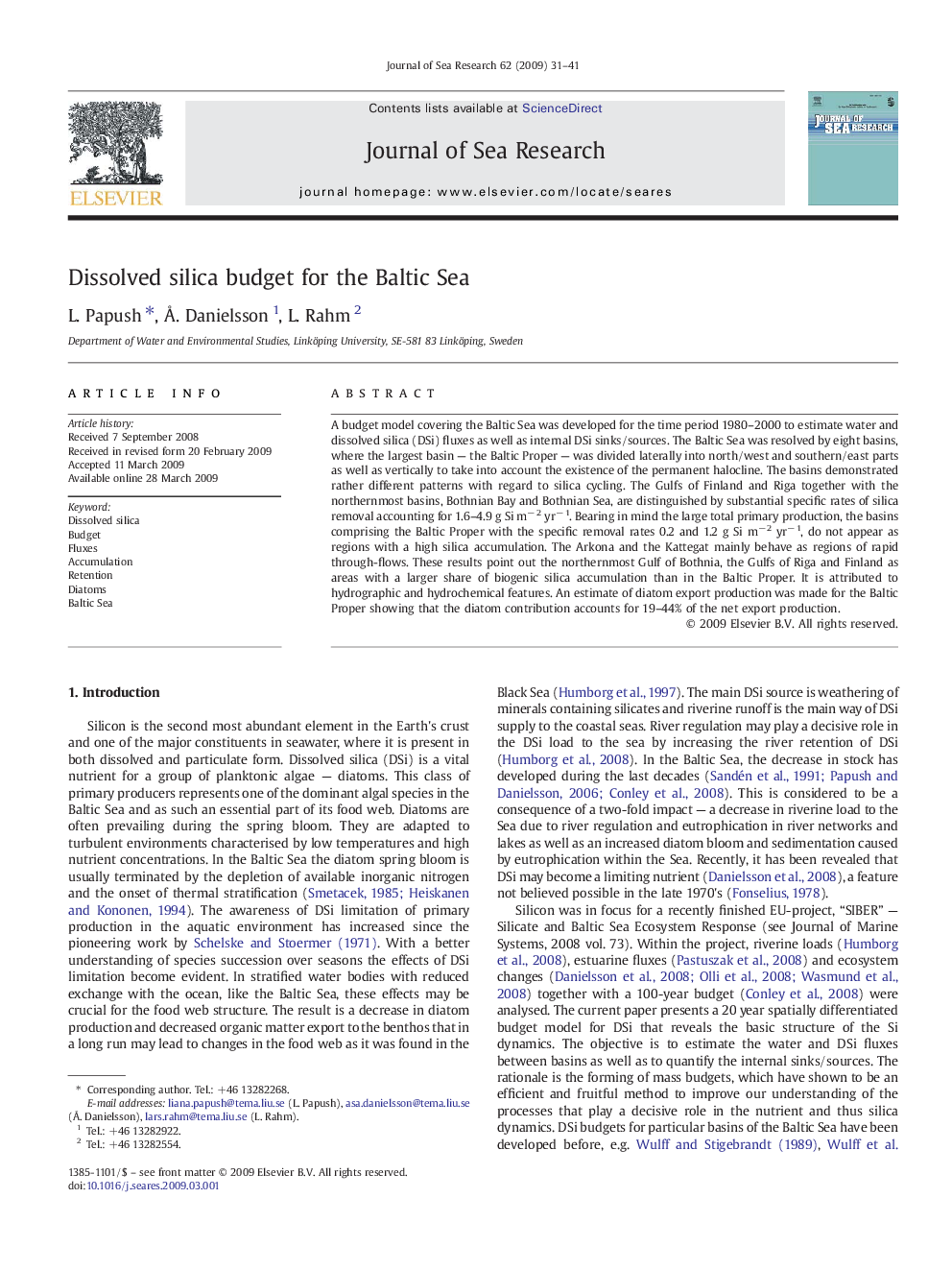| Article ID | Journal | Published Year | Pages | File Type |
|---|---|---|---|---|
| 4550302 | Journal of Sea Research | 2009 | 11 Pages |
A budget model covering the Baltic Sea was developed for the time period 1980–2000 to estimate water and dissolved silica (DSi) fluxes as well as internal DSi sinks/sources. The Baltic Sea was resolved by eight basins, where the largest basin — the Baltic Proper — was divided laterally into north/west and southern/east parts as well as vertically to take into account the existence of the permanent halocline. The basins demonstrated rather different patterns with regard to silica cycling. The Gulfs of Finland and Riga together with the northernmost basins, Bothnian Bay and Bothnian Sea, are distinguished by substantial specific rates of silica removal accounting for 1.6–4.9 g Si m− 2 yr− 1. Bearing in mind the large total primary production, the basins comprising the Baltic Proper with the specific removal rates 0.2 and 1.2 g Si m− 2 yr− 1, do not appear as regions with a high silica accumulation. The Arkona and the Kattegat mainly behave as regions of rapid through-flows. These results point out the northernmost Gulf of Bothnia, the Gulfs of Riga and Finland as areas with a larger share of biogenic silica accumulation than in the Baltic Proper. It is attributed to hydrographic and hydrochemical features. An estimate of diatom export production was made for the Baltic Proper showing that the diatom contribution accounts for 19–44% of the net export production.
